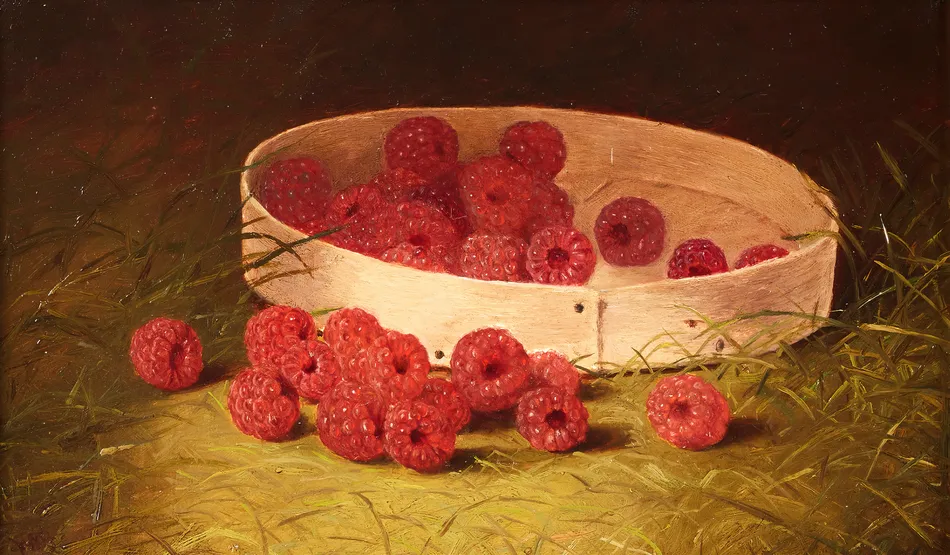-

Raspberries
Glossy raspberries tumble across the canvas, their plump forms catching the light. Each berry seems ready to burst, the deep reds and delicate fuzz almost tangible. A few leaves curl at the edges, adding a whisper of green to the rich, juicy scene. The fruit looks freshly picked, still holding the warmth of summer.